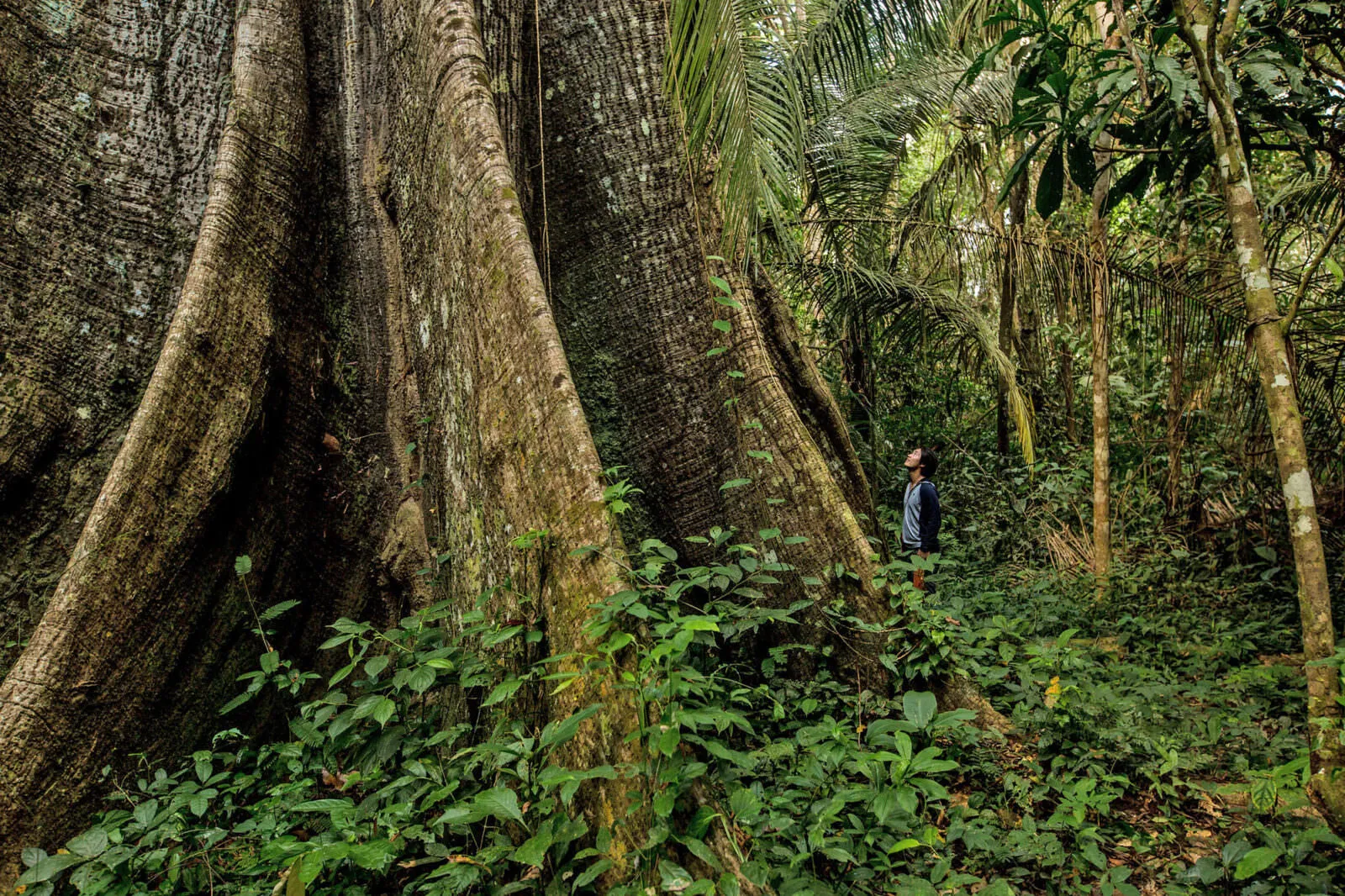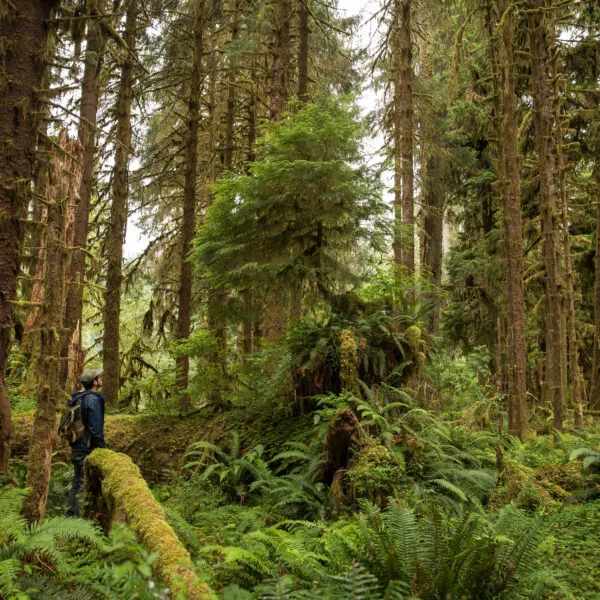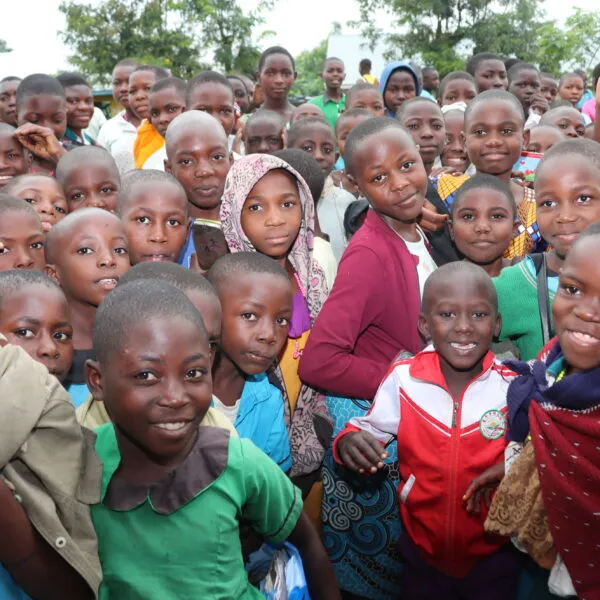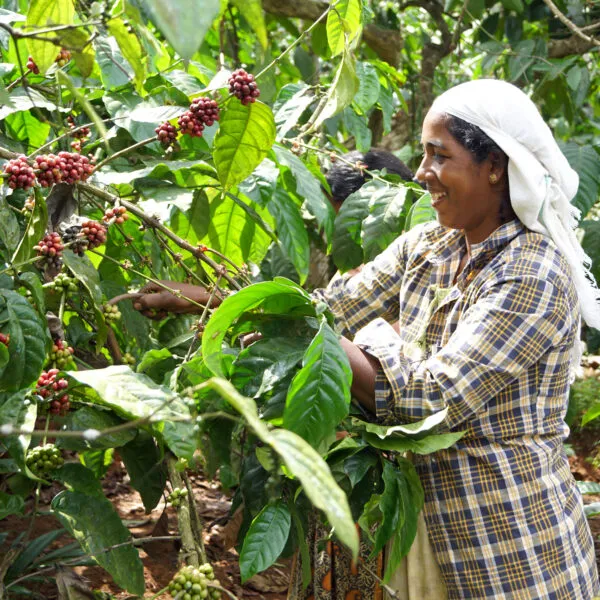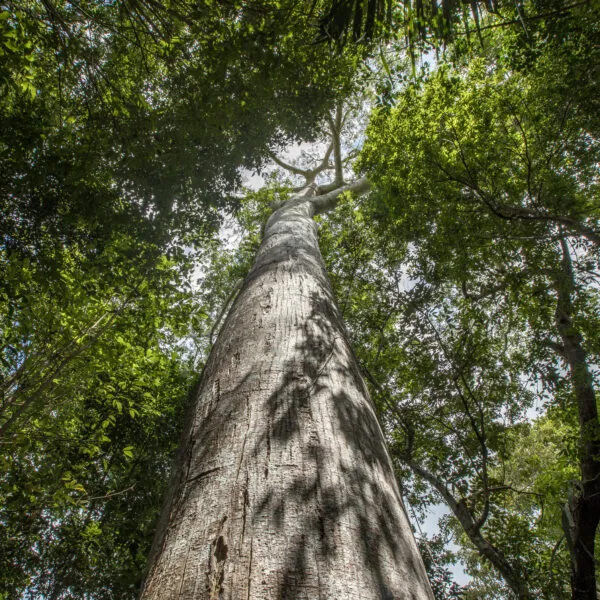Peru is a country of abundance. More than half its considerable land mass is covered in megadiverse Amazon rainforest, where scores of Indigenous communities with rich ecological knowledge have lived in harmony with nature for centuries. Peru’s fertile land produces great amounts of one of the world’s favorite beverages: coffee. In fact, Peru is the number one exporter of both organic coffee and organic cocoa worldwide.
But threats to farmer livelihoods, Indigenous groups, and forests are numerous too. The 2019 dry season brought with it an alarming increase in forest fires in Peru (as it did in Brazil, Bolivia, and other Amazonian countries)—fires resulting from illegal deforestation by farmers clearing land for crops. In Peru, agriculture is a major cause of deforestation; smallholder farmers struggling to make a living on existing cropland clear nearby forest to expand their growing area.
The Rainforest Alliance has partnered with Peru’s farmers and Indigenous forest communities, local governments, and smallholder farmer groups to address these challenges through a range of interconnected strategies. These include fostering solid connections with responsible buyers; providing technical training on how to increase crop harvests on existing farmland; building alliances with local governments; increasing access to financing and business training; and advancing methods to respond to climate change—which wreaks havoc on all kinds of crops, particularly coffee.
Healthy forests and vibrant communities are an essential part of the global climate solution. Sign up to learn more about our growing alliance.
Making coffee farming more sustainable in San Martín and Cajamarca
Much of our work centers in the northern region of San Martín, which is the third-largest coffee-producing region in Peru. We work with more than 3000 coffee farmers and more than 4000 cocoa farmers (whose farms have either Rainforest Alliance or UTZ certification) in the region. Our focus: advancing farming methods that improve yields and the health of the land, linking farmers to financing and buyers, providing training in business management, and sharing tools to adapt to a changing climate.
While the majority of the Rainforest Alliance’s work is in San Martín, we are also working in the Cajamarca region, where farmer groups are producing high-quality, certified coffee. We’ve linked them to major international buyers who have supported our work to strengthen governance within producer groups. These companies also support the spread of more sustainable agricultural practices, including improved management of wastewater and residues from coffee processing.
One group we work with, Cooperativa Agraria de Servicios Múltiples CENFROCAFE Peru (CENFROCAFE) in Cajamarca, has been UTZ certified for many years. Today the cooperative is going beyond the requirements of certification: members have begun to use digital technology to manage information collected in the fields and to strengthen the traceability of their products. CENFROCAFE also actively recruits young people and women to their coffee businesses, which include a cafeteria and coffee brands.
“These farmer groups have done an excellent job meeting the requirements of certification, but we’re working to deepen their understanding of the importance of the forest and sustainable practices,” Patricia Quijandría, Rainforest Alliance director for Peru, says. “As a result, we’ve seen some truly inspiring changes that go well beyond certification—improvements that will hold the groups and their communities in good stead for generations to come.”
Supporting Indigenous economies
In the San Martín region, we also work with eight Indigenous communities to bring their sustainable products to market. One of them, the community of Yurilamas, in the province of Lamas, sets aside 26,000 ha (64,200 acres) of its lands for conservation and uses another 7,000 hectares to cultivate cocoa, as well as beans, bananas, yucca, peanuts, and more. Community leader Eligio Cachique Amasifuen explains that with support from the Rainforest Alliance, his community is now working to sustainably harvest sangre de grado, the latex extracted from trees of the same name (sometimes called sangre de drago, or dragon’s blood) that is used in many medicines.
“We’re going to benefit so much [from this work with the Rainforest Alliance],” Cachique says. “Now we are extracting sangre de grado and taking it to different fairs so that the name of our community, Yurilamas, becomes known to buyers.”
Our work with Indigenous communities recently expanded to the Amazonas region. When fires raged through the Amazon forest in 2019, the Rainforest Alliance put out a call to our Instagram community asking for support for our partner organizations on the front lines of the crisis. People donated more than a million dollars within a few weeks to support groups in Brazil, Colombia, and Peru. We are partnering with DAR Perú to work with Indigenous groups around the communal reserve of Chayu Nain in the Amazonas region. Together, we’re providing trainings on fire prevention and business management, as well as facilitating linkages to the market. All of these interventions cultivate the local Indigenous economy—a goal at the center of our ongoing partnership with COICA (the pan-Amazon federation of Indigenous leaders) and its Peru chapter (Aidesep Pueblos Indígenas).
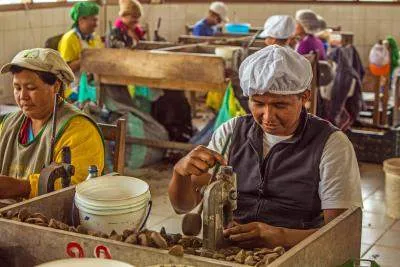
This work builds on the Rainforest Alliance’s work with the Tres Islas communities in the Madre de Dios region of the Amazon. After going through technical training, Indigenous-owned forest enterprises incorporated advanced processing into their business models, leading to a 480-percent increase in per-board foot income for sustainably harvested timber; a three-fold increase in the price received for Brazil nuts; and the launch of the community’s own brand of gourmet Brazil nut products. These remarkable achievements have contributed to a significant decline in deforestation rates in the area.
Tackling climate challenges in Peru’s coffee and cocoa landscapes
While the climate crisis poses challenges to farmers of all crops—unpredictable weather patterns, prolonged dry seasons, severe rains and flooding—it especially threatens coffee, Peru’s main export. The Rainforest Alliance works with farmers to cultivate other crops alongside coffee to hedge against both climate and market fluctuations. Many coffee farmers are switching to cocoa in lower elevations and taking their coffee crops to higher ground that is more hospitable for coffee plants.
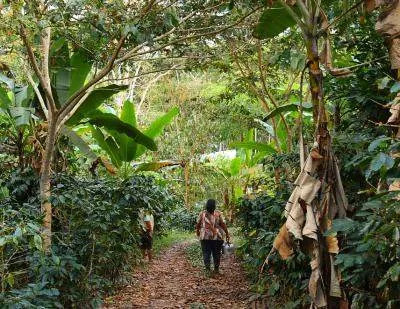
In addition to our ongoing work to help farmers become more resilient to climate challenges, the Rainforest Alliance created a ground-breaking climate-smart agriculture guide for Peru’s cocoa and coffee farmers, based on advanced climate modeling by science organization Center for Tropical Agriculture (CIAT), under the Consultative Group for International Agricultural Research (CGIAR), with support from Climate Change, Agriculture, and Food Security (CCAFS). The guide starts with methods for assessing local conditions to determine appropriate responses. Detailed instructions cover topics like pruning techniques and the use of simple solar dryers to deal with increased moisture (a challenge for coffee plants and coffee drying). The guide, created with data collected over 13 years, is specifically for cocoa and coffee landscapes in Peru, but it also includes information on good practices for other crops.
Innovating for increased sustainability
Peru is one of five countries where the Rainforest Alliance is piloting a new tool called LandScale that aims to measure the sustainability of a given territory by assessing resource management, human rights issues, deforestation and greenhouse gas emissions, and more. This assessment tool is in the early phases of development and will be applied to the coffee, cocoa, and palm sectors in San Martín.
A new generation of farmers and Indigenous producers
A new generation of growers, hyper-aware of the threats posed by our climate crisis, are taking the lead in transforming their communities. They are combining traditional ecological knowledge with climate-smart agriculture methods to cultivate a better future for themselves and their children. Rainforest Alliance trainings have also empowered these young people to understand—and connect with—global markets so that their communities can move from subsistence farming to thriving rural economies, all while honoring the precious Amazon rainforest that has sustained this beautiful country for centuries.
